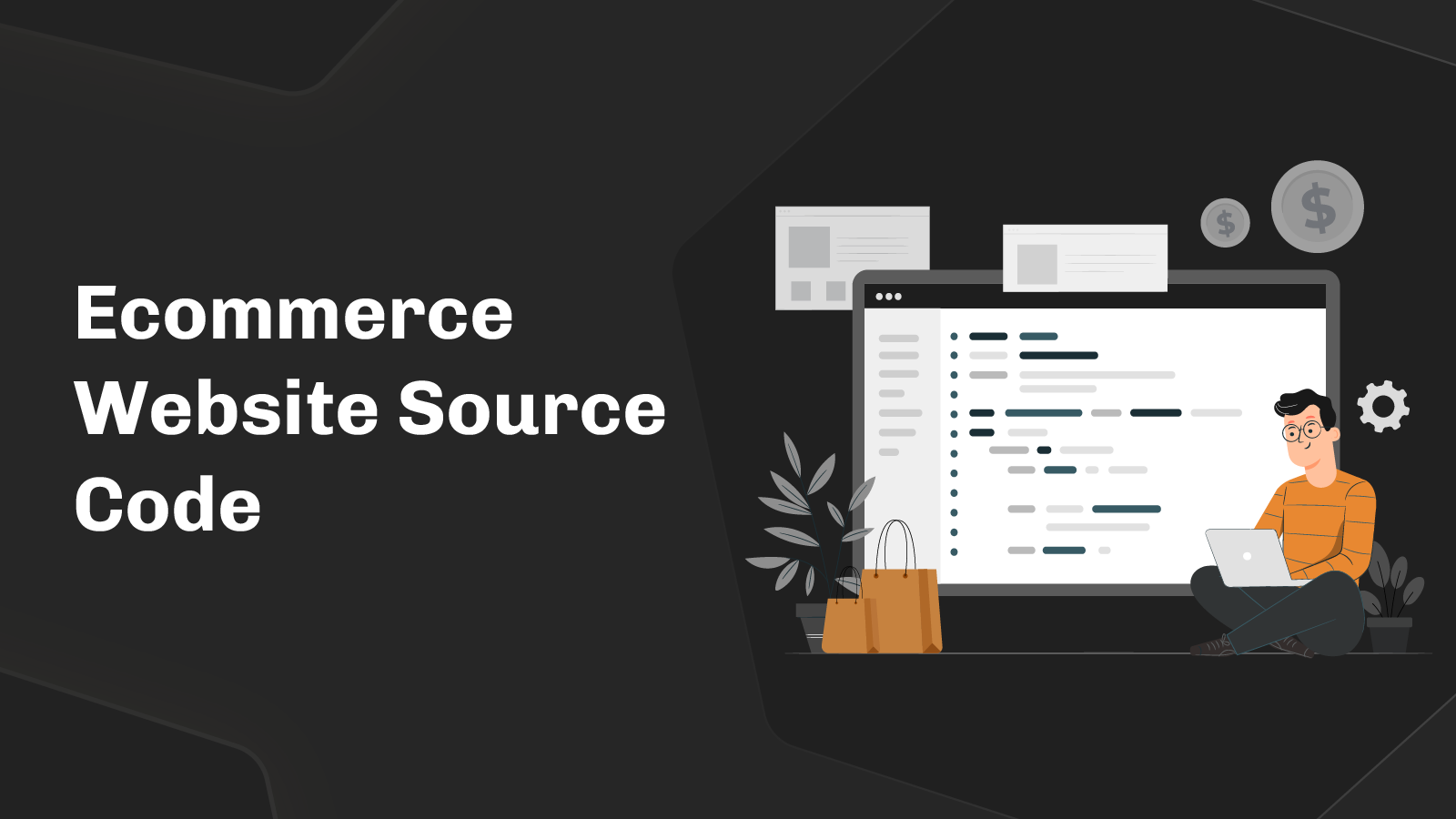The word “evolution” clicks in our mind with the scenery of something growing up and becoming the better version of what it was before. Sounds like a movie transition, where the hero becomes the mightiest one from a zero, but it is true!
eCommerce business has passed through exact same transition. Today we will travel to the past and see how CMS used to be or the phase before the CMS era. In this blog, we will also see how advanced Content Management Systems (CMS) revolutionized the eCommerce business.
Trust me, it will be fun! So sit back tight and enjoy the brilliant journey of how traditional CMS has become modern CMS today! Shall we?
What is eCommerce CMS?
eCommerce Content Management System (CMS) is a software that simplifies online store management. It enables businesses to create, organize, and update product listings, process payments, and handle orders. It acts as a powerful toolbox, helping businesses to manage products and inventory without complex coding.
By using an eCommerce content management system, businesses can focus on core operations. Which helps them to reach a wider audience, increase sales and grow their online presence efficiently.
That goes for the initial information of the eCommerce Content Management System (CMS). What about the ancestors of today’s modern CMSs? Let’s find out!
The Pre-eCommerce CMS Era
You can compare this time with the Stone Age era. This era refers to the early days of online business before the birth of specialized content management systems dedicated to eCommerce. During this time, businesses faced significant challenges setting up and running their online stores.
Problems that all online businesses faced at that time:
- Websites were mostly static and lacked dynamic features.
- Selling products required manual coding for each item for individual pages.
- Manually updating each product on a daily basis.
- Managing online businesses was extremely time-consuming.
- Basic Shopping Cart that wasn’t user-friendly at all.
- Systems faced a lack of important or basic functionalities.
- Managing inventory, processing orders, and handling payments required technical expertise, which was difficult for small businesses.
- Security and scalability were major concerns.
- Websites were more vulnerable to cyber threats.
Businesses faced major challenges in fully utilizing the potential of online commerce due to the absence of well-organized eCommerce solutions and user-friendly tools. Only a few giant companies with solid resources could establish a strong online presence and offer products for sale on the web.
However, this era created the groundwork for the subsequent rise of CMS for eCommerce platforms that revolutionized online business. Which makes it accessible to businesses of all sizes and unlocks the way for the successful eCommerce industry we know today.
The Rise of eCommerce Content Management System
Everything evolves over time. So does the eCommerce CMS. From the “stone-age” to today’s modern world, the transition was dramatic. How? Let’s find out!
We all know before dedicated platforms, businesses had to manually code and update individual product pages, which was time-consuming and challenging to handle online transactions.
The Rise of CMS for eCommerce is considered as a crucial moment in the world of online business. It began in the late 1990s when the first eCommerce-specific Content Management Systems emerged, revolutionizing how businesses operated their digital stores.
The concept of a dedicated CMS designed for eCommerce was a game-changer. It simplified the process of setting up and managing online shops. The first significant CMS platform for eCommerce was osCommerce. It was created by Harald Ponce de Leon in 2000.
osCommerce was an open-source solution that provided businesses with the tools to set up and manage online stores. Which makes it one of the earliest and most groundbreaking eCommerce Solutions in the world.
The revolution happened as more developers recognized the huge potential of online business and the need for user-friendly tools to accelerate its growth.
New CMS platforms like Shopify, founded in 2006 by Tobias Lütke, Scott Lake, and Daniel Weinand, are a leading eCommerce platform that has transformed the way businesses sell their products online. With its user-friendly interface and comprehensive features, Shopify has become a popular choice for entrepreneurs and established businesses alike.
Other platforms, such as Magento, developed in 2008, raised the bar with more advanced features, flexibility, and scalability.
Likewise, WooCommerce was introduced in 2011. It is a popular eCommerce plugin for WordPress, the widely-used content management system for building websites and blogs. Developed by WooThemes, later acquired by Automattic (the company behind WordPress). WooCommerce quickly gained traction as a go-to solution for businesses looking to add eCommerce functionality to their WordPress websites.
With these powerful tools, business owners could now focus on improving their product offerings and providing excellent customer experiences rather than worrying about the technical complexities of running an online store.
In the present day, the demand for modern CMS for eCommerce businesses has become universal and essential. 6amTech stands out as a company that develops exceptional modern CMS tailored for eCommerce. One of such product is 6amMart, a versatile, multi purpose and multi vendor eCommerce solution. You can run multiple online businesses simultaneously and manage them from a single dashboard. Yes, it is that much capable.
Mobile Commerce and Responsive Design
Mobile Commerce, also known as mCommerce, refers to the buying and selling goods and services through mobile devices like smartphones and tablets. With the increasing popularity of mobile technology, mCommerce has become a significant aspect of modern business. It enables customers to shop conveniently anytime, anywhere.
However, can you estimate how long the idea of “mCommerce” has been around? It’s been about a decade since people started making purchases from their smart devices, right? Wrong! This idea has been there since around 1997.
Wait a minute, cell phones didn’t have internet capabilities back then, so making purchases seemed improbable! At that time, buying ringtones and services through text messages was the extent of mobile transactions. The first browsing-like mobile application was actually introduced in Japan in 1999.
Later on, more and more mobile devices were gaining mobile internet and browsing. For that reason, businesses needed to optimize their websites for mobile users also. This led to the emergence of responsive web design. A design approach that ensures websites adapt and display properly on various screen sizes and devices.
The transition to responsive design has been transformative for eCommerce. It provides businesses with a seamless shopping experience across desktops, tablets, and smartphones. With the help of responsive design, eCommerce has become mCommerce.
Today, mCommerce continues to grow, reshaping the way people shop and interact with businesses in the digital age.
The Emergence of SaaS eCommerce Solutions
SaaS or Software-as-a-Service, is a software delivery model that enables users to access applications over the Internet without having to install or maintain the software locally. Instead, the software is hosted and managed by a third-party provider who handles all the technical aspects, including updates, security, and maintenance.
Sounds appealing, right? No extra burden of maintaining technical aspects, only focus on business improvement. SaaS came from exactly the same idea.
Traditionally, businesses purchased software licenses and installed applications on their local servers, which required substantial costs and ongoing maintenance expenses. The idea of SaaS was to provide software on a subscription basis, eliminating the need for businesses to invest in expensive hardware and infrastructure.
The SaaS model gained popularity in the early 2000s, with companies like Salesforce and Google leading the way. As the internet infrastructure improved and cloud computing became more prevalent, SaaS solutions blessed the eCommerce industry. It gives businesses a more simplified and accessible approach for managing online stores.
Here are the benefits of SaaS eCommerce Content Management Systems:
- SaaS platforms offer a hosted and cloud-based approach, eliminating the need for self-hosting and server management.
- Users can access their CMS from any device with an internet connection, providing flexibility and convenience.
- SaaS eCommerce platforms handle software updates, security, and backups, reducing the burden on users.
- They often come with pre-built templates and intuitive interfaces, enabling easy store setup without technical expertise.
- Businesses can scale resources and features based on their needs, making SaaS platforms suitable for both startups and enterprises.
- Subscription-based pricing models allow businesses to pay for their services, avoiding upfront infrastructure costs.
There are some popular SaaS CMS platforms, such as Shopify, BigCommerce, and Wix eCommerce. They have brought revolutionized changes in the industry of Content Management Systems for eCommerce.
Headless Commerce and API-First eCommerce Solution
Headless Commerce and API-First eCommerce Solutions are modern approaches to building online stores that offer greater flexibility and scalability. Let’s learn more about them.
Headless eCommerce
Headless? Ghost? No, not like that! Headless eCommerce has separated front-end and back-end. It allows businesses to use different technologies for each. This decoupling enables content to be delivered to various platforms, such as websites, mobile apps, smartwatches, or IoT devices, without affecting the back-end functionality.
Example: A fashion retailer using Headless eCommerce can update product details, inventory, and prices in the back-end CMS, while the front-end mobile app and website can pull this information through APIs to display it to customers.
API-First eCommerce CMS
API- or Application Programming Interface-First eCommerce Solution prioritizes the creation of APIs before developing the user interface. It ensures that data and content are smoothly accessible to other systems and applications. It makes integration with third-party services and platforms more straightforward.
Example: An API-First eCommerce Content Management System allows an online store to easily integrate with payment gateways, analytics tools, customer support systems, and other third-party services. It enhances the overall functionality of the eCommerce platform.
Both Headless eCommerce and API-First CMS help eBusinesses deliver a smooth shopping experience across multiple channels, adapt to new technologies, and efficiently manage content and data. These approaches are becoming popular as companies strive to remain competitive in the constantly changing eCommerce industry.
The Future of eCommerce Content Management System
So now we know how eCommerce CMS has evolved over the years. What about the future? Luckily, the future of CMS for eCommerce looks promising, with several exciting developments on the horizon. Let’s find out what we can expect from it in the near future.
AI Integration
Artificial Intelligence will play a significant role in enhancing personalization, customer support, and product recommendations, leading to more engaging and tailored shopping experiences.
Voice Commerce
Voice assistants like Alexa and Google Assistant will likely be integrated into eCommerce Solutions, enabling customers to purchase using voice commands.
Augmented Reality (AR) and Virtual Reality (VR)
AR and VR technologies will allow customers to virtually try products before purchasing, providing an immersive and interactive shopping experience.
Headless Commerce Expansion
The adoption of headless architecture will continue to grow, enabling businesses to deliver content seamlessly across various devices and platforms.
Enhanced Security Measures
eCommerce solutions will prioritize data security and implement advanced encryption and fraud protection technologies to build customer trust.
Mobile Commerce Dominance
Mobile devices will continue to dominate the eCommerce landscape, prompting businesses to focus on mobile-friendly designs and optimized user experiences.
Sustainability Initiatives
Businesses will integrate eco-friendly practices and sustainable options into their online store management solutions to meet the increasing demand for environmentally conscious shopping.
Omnichannel Integration
eCommerce Content Management System will seamlessly integrate with physical stores, creating a unified shopping experience across online and offline channels.
As technology evolves and consumer preferences change, the future of Online shop management systems will undoubtedly be shaped by innovative solutions that provide the evolving needs of businesses and consumers alike.
Final Thoughts
In this blog, you have gained deep knowledge about how eCommerce Solutions have evolved and reached the point we are standing now. However, the evolution of CMS for eCommerce hasn’t been completed yet. In fact, this is a never-ending journey.
Every day, technology is evolving so does the eCommerce industry. We will see new, more improved versions of eCommerce Content Management Systems that will eliminate current shortcomings and revolutionize the eCommerce industry.
Thanks for reading this blog. If you have any further queries, feel free to ask!
Peace!
















